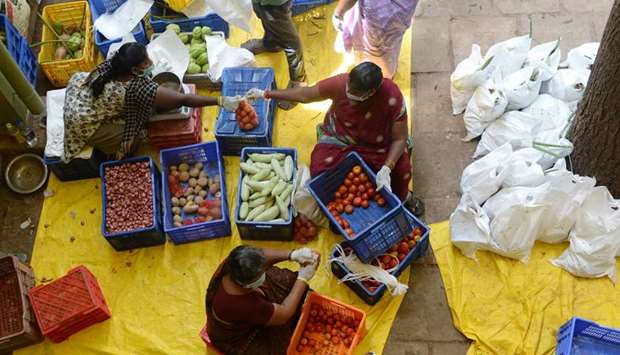Just a week ago, it seemed that coronavirus cases were starting to plateau, as the central government claimed that its growth had been more or less linear and not exponential.
Yet, as many as 3,900 new cases and 195 deaths were reported on Tuesday.
Medical experts says that it’s a significant spike, which could have emerged from increased testing, migration of people across states and flouting of social distancing guidelines.
In major cities, the coronavirus is spewing fire and the bump in cases is pronounced.
Arvind Kumar, chairman of the Centre for Chest Surgery and director at the Institute of Robotic Surgery in Sir Ganga Ram Hospital, said something had gone wrong in the past one week.
The spurt in the number of cases was not a good sign in the country’s fight against the coronavirus, he said.
“On the one hand we have a lockdown and on the other we see serpentine queues outside some shops. Also, why did the government allow labour migration at this stage. They could have been asked to stay back till the end of lockdown,” Kumar said.
“All these factors are bound to play a major role in the increase in coronavirus cases. Of course, we are also testing more than before, which would lead to identification of more cases.”
Kumar said it’s the real increase in number which could be due to the movement of people and increase in testing.
It could continue for three to six weeks after the migration of people.
The trend undermined the largely held notion that things were under control, he added.
Explaining the spike, the Health Ministry said some states were not reporting cases in a timely manner. The total number of coronavirus cases in the country is 49,391 and 1,694 people have died of Covid-19.
Avi Kumar, a consultant at Fortis Escorts Heart Institute, said, “After an increase in testing, we have seen a rise in positive as well as negative cases. The recovery rate has also improved. But throwing social distancing norms out of window and allowing migration of people would tend to have a role in the spurt in cases.”
He stressed the Kerala model of re-quarantine and chalking out a model of home delivery to maintain social distancing among people.
“After this migration of people, the next two-three weeks will play a major role in deciding whether we have flattened the curve or hit the peak,” said Kumar.
Sourabh Sachar, a senior resident at Safdarjung Hospital, said the disregard to social distancing norms in the last few days had potentially contributed to the spike in cases along with increased testing.
“It’s imperative that in orange and especially red zones, we don’t let our guard down and social distancing and hygiene norms are strictly followed. Otherwise, the gain made in the last five weeks might be lost,” Sachar said.
lThe Chandigarh administration yesterday came up with a novel way – sounding of a siren – to remind residents about the end of partial relaxation period in the evenings.
To remind people to be indoors by 7pm daily, a siren will be sounded, the union territory’s adviser Manoj Parida tweeted.
“Don’t fight with the police if you are caught outdoors after siren,” he said.
The administration on May 2 decided to lift the curfew in the city from May 3, while the lockdown period was extended till May 17.
Markets in different sectors will open from 10am to 6pm daily. Vehicles will be allowed to run without passes from 7am to 7pm.

Workers wearing facemasks pack pre-ordered vegetables for distribution at the Tamil Nadu Horticulture Centre in Chennai yesterday.
